We do not generally recommend trying to see the Big Island all in one day...there is a good reason it is called "The Big Island". However, vacation schedules and group interests vary and a surprising number of visitors evince a keen desire to tour the entire island in a single day. *sigh*. They rarely attempt it twice. However, if we were to recommend a day trip round the island, commencing at Kailua Kona, the itinerary below would probably be your best bet at hitting the greatest number of highlights in the shortest possible time.
At 14 hours driving and touring time, there is little time for dilly-dally and the unhurried visitor will of necessity trim this ambitious schedule. Easy ways to shorten the itinerary if you find yourself falling behind include skipping legs 5-7 (i.e., follow Hwy 11 all the way from Hawaii Volcanoes National Park into Hilo; time savings of about 2 1/2 hours) or skipping legs 12-13 (i.e., traveling along Hwy 19 from Hilo through Honoka'a directly to Waimea; time savings about 2 1/2 hours). You may also choose simply to skip any individual site anywhere along this route; for instance, Leg 1, Upcountry Kona, can easily be done on another morning from Kailua Kona and can be omitted from this trip simply by driving Hwy 11 straight to Punalu'u, saving you perhaps an hour.
However ambitious, this schedule will allow you, if you start out about 6 in the morning and proceed apace, to circumnavigate the island seeing everything and arrive at Hapuna Beach in time for a delightful picnic dinner (no food available at beach, so stop and buy take-away in Waimea) and an absolutely unforgettable sunset.
If you are serious about undertaking this one-day, whirl-wind tour, we highly recommend you purchase AND USE Tour Guide Hawaii's newly released iPhone/iPod App...it uses GPS, Google Maps with driving directions and has onboard maps and driving directions where cell phone service and internet are not available. It plays a video presentation with all kinds of information about history, culture, safety and the natural history about all the most fascinating sites on the island, including the whereabouts of all the public restrooms! The iPhone App gives you detailed, accurate information on where to go, what to bring, what to expect when you get there and what to do next. Available here, the App will give you much, much more detailed information than this blog post.
So what are you doing waiting around reading this for? It's a BIG ISLAND you are trying to explore and you've got to hustle! Even though you are the one who decided to try it all in one day, remember that we warned you it would be a long, long day!
Leg 1) Start at north end of Keauhou Historic District on Ali'i Drive, head south on Ali'i Drive to jct with Kamehameha II Hwy; east on Kamehameha III to Hwy 11. Take Hwy 11 south to jct with Hwy 160, just south of the town of Captain Cook. Head downhill on Hwy 160 to Napo'opo'o Village, turn north on Pu'uhonua Beach Road to Kealakekua Bay State Historical Park at end of road; this is where you view the Captain Cook Monument.
Keauhou Historic District and Kona Coffee
For almost 400 years, temples and palaces along the Kona coastline served as a kind of "Rome of the Pacific", a great political, religious and cultural center in Polynesia, until the capital was moved to Honolulu in 1850 by Kamehameha III. The most important, interesting and best preserved historical and cultural sites lie within the Keauhou Historic District, between Kahalu'u Beach Park in Kailua running south 6 miles to Kuamo'o Bay in Keauhou. The District contains perhaps a dozen fascinating sites that are easy to walk to, well maintained and quite interesting.
To see the numerous fascinating and important archaeological sites in the Keauhou Historic District, it is necessary to park your car in the free parking at either Kahalu'u Beach Park or the Keauhou Beach Resort and explore on foot.
Just uphill from the Historic District is the Kona Coffee District. Hawaii is the only state in the union which produces coffee, and Kona coffee is perhaps the finest in the world. Over 2 millions pounds of coffee a year are produced on about 600, 2-3 acre farms; tours of coffee farms and roasteries are available.
Kealakekua Bay Historical District and Captain Cook Monument
A place of both dramatic historic events and unparalleled scenery, beautiful and now peaceful Kealakekua Bay (Pathway of the Gods) opens beneath steep, beetling cliffs on the ancient surfing beach along the shoreline of Napo'opo'o Village. The site of arguably the most important event in the history of Polynesia, home to pods of frolicking dolphins, providing some truly breathtaking snorkeling, Kealakekua Bay is one of the most magical spots in the State of Hawai'i.
Across the bay from Napo'opo'o stands the solitary white obelisk that marks the lonely Captain Cook Monument. It was in this broad bay that Captain James Cook made his deepest impression on, and longest visit with, native Hawai'ians when he first arrived late in November of 1778; and it was here where he met his tragic end in February 1779 during his second visit. At the State Park at the end of the road in Napo'opo'o are picnic facilities, pavilions and restrooms.
Leg 2) Return south on Pu'uhonua Beach Road to jct with Hwy 160; Hwy 160 south to Pu'u Honua O Hounaunau National Historical Park-this is the Place of Refuge.
Place of Refuge: Pu'u Honua O Honaunau National Historic Park
A beautiful, peaceful, restful piece of Old Hawai'i, Pu'u Honua O Honaunau is a place of ease and regeneration for weary and jaded souls. Of enormous historical and cultural significance, the sacred grounds at Honaunau are the best-preserved remaining Pu'u Honua, or Place of Refuge, complex in Hawai'i. It is also a wonderful area to wander, snorkel, relax and picnic. For anyone who had any doubts about what Old Hawai'i was like, a trip to Honaunau will fill your imagination, your camera and your spirit.
A complex and strict order of law, known as the kapu system, controlled and governed everything in ancient Hawai'i. Under this system, judgment was death, immediate and final, unless the accused could escape to one of the designated places of refuge. There the accused would undergo a cleansing ceremony, be absolved of all crimes, and allowed to return to his family free of onus. The National Park has a Visitor's Center and bookshop, full picnic and restroom facilities. Although no swimming or snorkeling is allowed within the Park, adjacent is Two-Step Beach on Hounaunau Bay, one of the premiere snorkeling spots on the Island.
Leg 3) Return to Hwy 11 via Hwy 160; continue south on Hwy 11 to Punalu'u Road; Punalu'u Road to Punalu'u Black Sand Beach Park.
Punalu'u Black Sand Beach Park
A truly remarkable place of great peace, beauty and spiritual healing, Punalu'u's black sand beach is world-renowned. Endangered Hawai'ian Green Sea Turtles swim the waters here and bask on the beach. The wildness of the ocean and the serenity of the freshwater fishpond and coconut palm-shaded beaches make this an ideal place to spend some soul-recharge time. The ocean here can be rough, so use caution when swimming.
Available services include water, picnic tables, restrooms, electrical outlets, and pavilions, parking; camping is by permit only. During peak tourist time, there is a souvenir stand with some packaged food items and canned drinks for sale, otherwise the nearest food, gasoline and other services are in either Pahala or Na'alehu.
Leg 4) Return to Hwy 11 on Punalu'u road; continue east on Hwy 11 to Hawaii Volcanoes National Park Entrance and jct with Crater Rim Drive; take Crater Rim Drive west to Kilauea Visitor's Center to Jagger Museum.
Hawai'i Volcanoes National Park
Hawai'i Volcanoes National Park is a magical, spiritual, wondrous, strange and beautiful place comprised of great contrasts and contradictions: dry as dust desert to teeming tropical jungle; frigid sub-arctic wasteland to steaming black sand beaches to rivers of flowing lava.
The star attractions in the Park are a pair of active volcanoes; Mauna Loa is the largest mountain on earth and Kilauea is most active volcano on earth. However, there are numerous other wonders from lava tubes to crawl down, black sand beaches with sea turtles to watch, mysterious petroglyph fields to explore, tropical jungles to hike through, endangered bird species to find, happy-face spiders to amuse and an otherworldly volcanic landscape so fresh it's still steaming.
Hawaii Volcanoes National Park is open 24 hours a day, 365 days a year. During daylight hours, an access fee is charged. The Visitor Center has a 24-hour information line at 808.985.7017 and there is a 24-hour eruption hotline at 808.985.6000. Within the Park tune to A.M. radio 530 for continuous information broadcast. There tourist items available for sale and one restaurant and in the park, however generally shopping, restaurants and gasoline are only available in the nearby village of Volcano.
Kilauea Visitor Center
Newly remodeled and updated, the Kilauea Visitor's Center is an outstanding resource of information on Hawaii's volcanoes and the National Park; the not-to-be-missed first stop in the park you must make. The Center is run by enthusiastic and knowledgeable staff that has the most up-to-date information on viewing the eruption, hiking and camping, bird watching, stargazing and just about any other topic of interest to Park visitors. Available for sale in the Center are maps, guidebooks, books and videos about the volcanoes, Hawai'iana, history, plants and every topic you can imagine pertinent to the Park, even souvenirs. There are free brochures and pamphlets on various trails, attractions, hiking safety and lava viewing hazards and precautions.
The Visitor Center is open daily from 7:45 a.m. to 5 p.m.; there are public restrooms, water and pay phones available. Starting at 9 a.m. and showing every hour on the hour is a 20 minute informative movie about the Park; the film changes from time to time, but always contains spectacular footage of eruptions, information on volcanology and the natural and human history of the Park.
Jagger Museum and Hawai'i Volcano Observatory
Famed for its fabulous views of Mauna Loa and Kilauea as much as for its interesting exhibits, The Jagger Museum (named for geologist Thomas A. Jagger) is open daily from 8:30a.m. to 5:00p.m. Exhibits include murals by Herb Kawainui Kane, seismograph charts of eruptions and earthquakes, geological displays and display about the natural and human history of the Park.
When entering the parking lot of the Museum/Observatory, be especially careful of the Federally-protected Hawaii Goose, the Nene, who seem to congregate here. The Nene is the State Bird of Hawai'i, and this parking lot and its surrounding area constitute one of the best places for viewing them.
Leg 5) Follow Crater Rim Drive back to Park Entrance and then to Hwy 11. Go east on Hwy 11 to jct with Hwy 130 at Kea'au; take Hwy 130 south to Pahoa.
Puna District and Pahoa Town
Uncrowded, off the beaten track and largely undiscovered by tourists, Puna District is a magnificent wonderland; from incredible tree-tunneled roads, geothermal fields of steam vents, lovely beach parks, hot ponds, hikes on raw lava flows and jungle trails, and unequaled snorkeling, the land cries out for the visitor to explore a little bit.
At the center of Puna is Pahoa Town; wild, untamed and even a bit unruly, with its false-front, western-style buildings and raised wooden sidewalks, Pahoa looks more like it belongs in Wyoming. But Wild West isn't the only subculture evident here...tie-dye banners and the general "flower-power" ambience some businesses and citizens lend Pahoa give it a decidedly "'60's" feel. It has been said of Pahoa that if it weren't for counter-cultural influences, it would have no cultural influences at all. The charm and allure of this way of living is evident when you consider that the region around Pahoa is the fastest growing portion of the island. Pahoa has some of the best restaurants on the island, THE best natural foods store and a great public pool.
Leg 6) At Pahoa, get on Hwy 130 to Kalapana.
Kalapana Disaster of 1990/Kaimu Black Sand Beach
In 1990 the volcano goddess Pele determined it was time for some serious housecleaning in Puna. Lava flows from Kilauea's East Rift engulfed the villages of Royal Gardens, Kaimu and Kalapana, destroying virtually everything. Buried were a centuries old fishing village and a world famous black sand beach. When the lava came, it wiped out not just material possessions; it wiped out a way of life and a landscape cherished by generations.
The Big Island's newest black sand beach, Kaimu Beach, is a lovely if barren crescent of sand at the end of an unforgiving expanse of lava from the 1990 flows. The trail to the new black sand beach is marked with hundreds of young palms, numerous lava casts which include palms, pandanas fruit and even some fish that were caught in tide pools.
From the lava hillocks along the trail you can get nice views of the eruption plume at Pu'u O'o, up on the flank of Kilauea, as well as the steam clouds down a few miles along the coast where the lava enters the sea. Restrooms and fast food are available at the end of the road.
Leg 7) From Kalapana take Hwy 137 to jct with Hwy 132 at Kapoho; take Hwy 132 northward to Lava Trees State Monument.
Lava Trees State Monument
Under a lacey canopy of monkeypod trees, casts of ohi'a trees stand as monuments to a fast-moving pahoehoe lava flow that passed through here in 1790. When the lava hit the water-saturated ohi'a trees, it cooled and began to congeal around them. The original ohi'a trees burned away but the quickly cooled lava around them stands here today, hollow, with imprints of the tree bark inside.
Lava Trees Park offers trails to hike and a restful, bird-filled jungle to sit and listen to. You can spend between 20 minutes to an hour wandering the trails, here, exploring and discovering. Be careful, however, the area is riddled with hidden cracks in the ground which can make exploring hazardous.
You may wish to avail yourself of the restrooms here; they are the last public facilities for some distance.
Leg 8) Return to Hwy 130; Hwy 130 north through Pahoa to Kea'au and jct with Hwy 11. Hwy 11 North to Hilo.
Hilo Town
Beautiful but wet, metropolitan but decrepit, bustling but laid back, Hilo is a lovely, maddening, heartbreaking, addictive study in contrasts. In can rain all day long for 50 days in a row, yet when the sun does shine, the views of Mauna Loa and Mauna Kea from the Lilioukalani Gardens, or of Hilo Bay as you drive down from the mountains, or the rain-forest and waterfall choked gulches with lovely beaches along the highway north of town, make Hilo one of the most truly, achingly-lovely spots on earth.
More laid back and sleepier than bustling Kailua Kona, Hilo is the largest town on the island, and the county seat. The Imiloa Astronomy Center of Hawaii, Tsunami Museum, Lyman House Missionary Museum and the Panaewa Rainforest Zoo are all wonderful places to learn about various aspects of Hawaii. There are numerous shopping districts, two large malls and the Historic Old Hilo downtown shops to browse through, a variety of sprawling green parks, a fabulous tropical arboretum right downtown and a mile-long black-sand beach fronting the bay to explore. Hilo's Farmer's Market is a "must see" for any visitor who is spending time on this side of the island.
Leg 9) In Hilo, go north on Hwy 11 to jct with Hwy 19; take Hwy 19 to jct with Waianuenue Ave; head southwestward on Waianuenue Ave (Hwy 200) to Rainbow Falls.
Rainbow Falls and Wailuku River Park
The subject of recent and ancient legend, Rainbow Falls is the lovely emblem of Hilo town. The characteristic wishbone shape of Rainbow Falls is best seen at moderate river flows...too little water and only a single drizzle remains, too much runoff and the falls merge into a single, roaring flume. At any time, however, it's a beautiful place and worthwhile to visit. The rainbows within the falls are best seen in the mid to late morning. Follow the trail to the left along the river bank to delightful swimming and wandering; please note, however, that swimming in rivers and near falling water is dangerous. Don't go in if the current is swift or if recent rains have swollen the river.
Restrooms are by the parking lot and a souvenir shop is located across the street.
Leg 10) Return on Hwy 200 to Hwy 19, head north on Hwy 19 to Hwy 220 at Honomu; continue through Honomu to Akaka Falls.
Akaka Falls
There is a reason that Akaka Falls rates as the most visited tourist site on the Island of Hawai'i. Simply put, the 420 foot, free falling plunge of clear water down a fern festooned cliff is an amazing and beautiful site. Leaving the parking lot, the paved loop trail of about one mile, winds through a wonderful jungle of exotic flowers, ferns, orchids, ginger and bamboo. Two smaller falls are also seen along the way to the stellar Akaka Falls. Akaka Falls has restrooms but no other facilities.
When visiting Akaka Falls, be sure to save some time to explore the shops, galleries and cafes of Honomu on the way back to the highway; it's unlike anywhere you've ever been before...guaranteed.
Leg 11) Return Hwy 220 through Honomu to Hwy 19, then north on Hwy 19 to Honoka'a.
Honoka'a Town
Built in the era of sugar great plantations and left culturally and economically isolated after the industry collapse, until recently Honoka'a was content to drowse along through the decades. A boom in real estate and return of vital human energy to the area has made a literal renaissance of the town. It boasts numerous wonderful restaurants, gift and boutique shops and the highest density of antique shops on the island. Be sure to stop to explore a little on your way to or from Waipi'o Valley...it's a fun, happening kind of place and always steeped with aloha.
Driving north or south out of Honoka'a, remnants of old sugar mills, fields and wild cane can still be seen. When Captain Cook arrived in 1778, only wild sugar cane was growing; at its height in the mid-1960's one in 12 people were employed in the sugar industry which produced in excess of a million tons of sugar annually. Though the business is gone, what is left are the people who once worked the fields and mills. The melding of the rich cultures of Japanese, Chinese, Filipinos, Portuguese, and others is what gives today's unique Hawaii lifestyle its sweet flavor.
Leg 12) At Honoka'a, turn north on Hwy 240 to Waipi'o Valley.
Waipi'o Valley
Waipi'o Valley is arguably the most magical place on the Big Island. The steep canyon walls and verdant fields of the valley floor, the mile long black sand beach and numerous immense waterfalls that line the valley walls all call out to the visitor for exploration.
Always listed among the most beautiful spots in the State of Hawai'i, this valley is as hauntingly lovely as it is difficult to see in its entirety.
Tours down into the valley in vans, on horse drawn wagons and ATVs can be booked in Honoka'a. Over-flights in fixed wing aircraft and helicopters also offer fine venues from which to see this amazing piece of Hawai'i. Hiking down and wandering the immense black sand beach, exploring the ironwood copses and sand dunes and discovering the hidden waterfalls is also a popular way to see the canyon. Although the hike down is only a little over 1 mile and a thousand feet elevation loss, the climb back up is sweltering in the ferocious sun and heat. Think twice before hiking down. Facilities at the Scenic Overlook include a pavilion and restrooms; there are none within the valley itself.
Leg 13 Return on Hwy 240 to Honoka'a; at Honoka'a turn west on Hwy 19 to Waimea.
Waimea Town and Cowboy Country
Snuggled between Mauna Kea and Kohala Volcano in Hawaii's scenic mountain heart, seemingly always shrouded in mist and chilly, Waimea is definitely Hawai'ian cowboy country. Although jeans and flannel shirts appear to be the town uniform, Waimea is very sophisticated, boasting some of the finest shopping and restaurants and the most modern hospital on the island.
From Waimea, Highway 250, the Kohala Mountain Road, spills beautifully through mountain, upland meadow and forest to the "Old Hawaii" town and artist community at Hawi.
Additionally, the cattle industry centers in Waimea. In 1793 British Navigator George Vancouver presented cows to King Kamehameha which were allowed to roam free and soon became a problem. Shortly after horses were brought to Hawaii in 1804, Kamehameha recruited California vaqueros, whom Hawai'ians called "paniolo"--a corruption of the word "Espańol"--to control the wild herds, and the generations-old ranching lifestyle here was born.
The vaqueros also brought their guitars and their love of music. A deeply musical people, the Hawaiians were intensely interested in these, the first stringed instruments they had seen. They quickly learned to work-out their own tunings, called "slack key guitar", which more suited the style of their indigenous music.
Leg 14) At Waimea, continue on Hwy 19 (also called Kawaihae Road) to Kawaihae; at Kawaihae, turn south on Hwy 19 to Hapuna Beach. If you have timed your trip right, you will arrive at Hapuna Beach before sunset. This is a most amazing place to watch the sunset over the Pacific Ocean with Haleakala on Maui looming on the horizon. If it is already dark, proceed on Hwy 19 south to Kailua Kona.
Hapuna Beach
Always rated in the Top 10 of American beaches, Hapuna Beach is the premiere beach destination on the Island of Hawai'i. Long, wide and phenomenally sandy, it has everything one dreams of in a Hawai'ian beach: abundant sun, surf, clean, clear and quiet snorkeling water, shade and well-maintained facilities.
There are lifeguards, several pavilions, barbecues, picnic tables, restrooms, showers and a small café. The center of the beach is for wave play and boogie boarding, the north and south coves are quieter, for snorkeling or gentle floating. Although most patrons must walk about 100 yards down a path from the parking lot, Handicapped Parking exists right on the beach.
Leg 15) Proceed on Hwy 19 south to Kailua Kona.
For more information on Tour Guide Hawaii's fabulous new iPhone and iPod App, please go here, here and here.
For more information on traveling to Hawaii in general and touring the Big Island in particular, please visit www.tourguidehawaii.com and www.lovingthebigisland.wordpress.com.
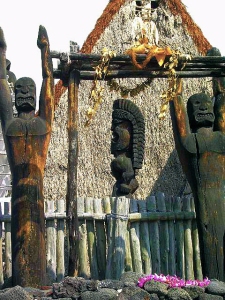
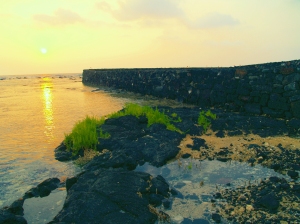
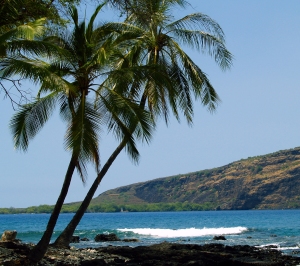
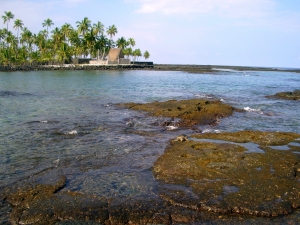
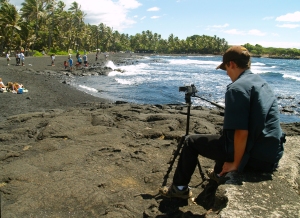

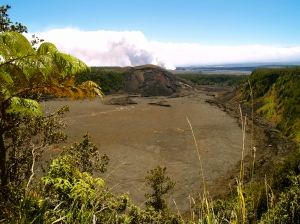
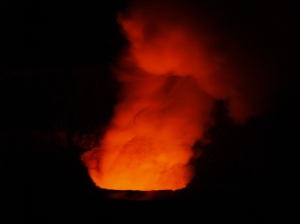

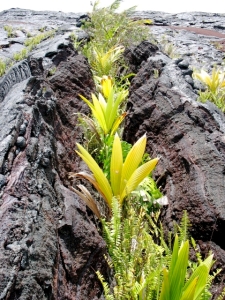
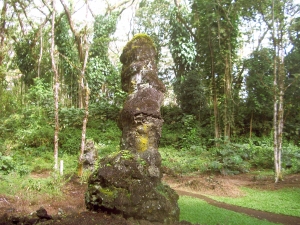

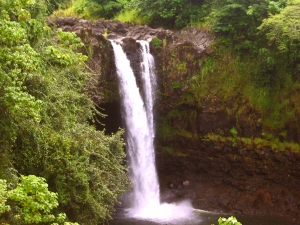
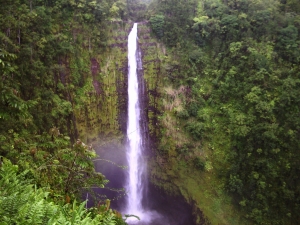
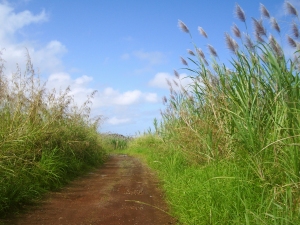
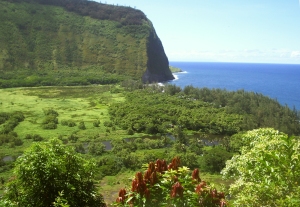
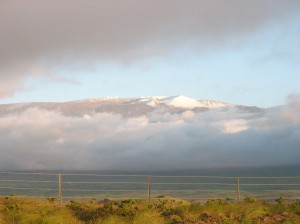
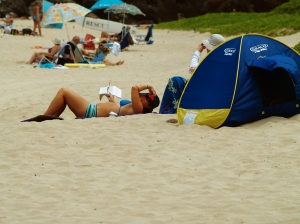


No comments:
Post a Comment